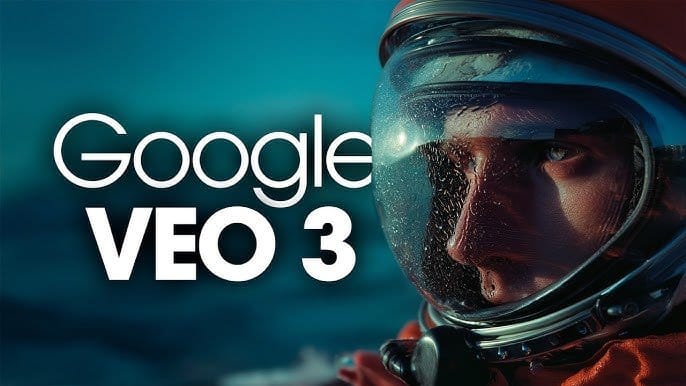Google Veo 3 and Flow: The Future of AI Filmmaking Has Arrived
Artificial Intelligence is transforming industries across the board, and now it’s making a significant impact in the world of cinema. With the launch of Google DeepMind Veo 3 and Flow, the AI film making landscape is being redefined. These tools allow creators to generate cinematic videos from simple text prompts, removing the need for traditional film sets, camera crews, or post-production teams. While the technology is groundbreaking, it also raises critical questions about authorship, creativity, and the future of storytelling.
🔍 What is Veo 3? A Leap in Text-to-Video AI
Veo 3 is DeepMind’s most advanced video generation model to date. It uses natural language processing to interpret textual descriptions and transform them into fully rendered, cinematic video clips. The model excels in producing lifelike motion, synchronized speech, environmental sounds, and even realistic camera movements — all from a few lines of input text.
✨ Key Features of Veo 3:
- 1080p Cinematic Output
- Natural Lip Sync and Dialogue Integration
- Camera Control for Pans, Zooms, and Dolly Shots
- Emotion and Style Settings (e.g., dramatic, joyful, suspenseful)
This means that users can literally write a movie scene, choose the desired camera framing and emotional tone, and receive a high-quality rendered clip without ever touching a camera.
📌 Official Page: Google DeepMind Veo Overview
🛠️ Flow: The Creative Interface for AI Filmmakers
To complement Veo 3, Google has developed Flow, a creative interface built for seamless text-to-video production. Think of it as your AI-powered movie studio, where you can manage characters, scenes, assets, and camera setups — all in one place.
🎬 Flow Key Features:
- SceneBuilder for building and refining visual narratives
- Camera Tools to control shot angles, movement, and lenses
- Asset Libraries for managing backgrounds, characters, and props
- Flow TV — a curated stream of user-generated AI videos and tutorials
Unlike traditional editing software, Flow is designed for AI-native storytelling — faster, cheaper, and more accessible.
📌 Access Flow here: Google Gemini AI Ultra Plan
💸 Pricing and Access: How to Get Veo 3 and Flow
Currently, Veo 3 and Flow are available only through Google Future AI Ultra subscription plan, priced at $249.99/month. However, Google is offering a 50% discount for the first three months, bringing the initial cost to $124.99/month.
✅ What You Get:
- Access to Veo 3 video generation
- Full Flow creative suite
- Gemini 2.5 Pro (Google’s most advanced AI assistant)
- Project Mariner (experimental AI research assistant)
- YouTube Premium
- 30 TB of cloud storage
This subscription is available only in the U.S. (as of now), via the Gemini portal.
📌 Subscribe to Gemini AI Ultra
🎥 Real-World Use: Darren Aronofsky & AI Collaboration
To show off its capabilities, Google partnered with award-winning filmmaker Darren Aronofsky to demonstrate how Veo can be used in professional filmmaking. The results were stunning — atmospheric sequences, emotional character close-ups, and dramatic lighting — all generated with minimal human intervention.
Read about the collaboration here:
📌 Google AI Partners with Darren Aronofsky
⚠️ Concerns: What Happens to Human Creativity?
While Veo 3 and Flow unlock creative potential for individuals without access to film gear, there’s a growing concern among professionals. If AI models are creating the content, who owns it? What happens to the jobs of cinematographers, set designers, editors, and actors?
🧠 Points of Debate:
- Is prompt-writing the new screenwriting?
- Can AI-generated performances win awards?
- Will the public value AI-made art the same as traditional works?
These tools strip away many of the happy accidents and improvisational magic that define filmmaking. With simulation replacing experimentation, is AI creativity still “art”?
🔐 Creative Ownership and Legal Grey Areas
One of the biggest concerns surrounding AI-generated media is authorship and intellectual property. Google has integrated SynthID watermarks into Veo’s outputs to indicate AI generation. However, legal protections for synthetic performances (voice, likeness, and character creation) remain unclear.
For example, commercial productions using Veo-generated actors or environments must navigate union agreements, content licensing, and international IP laws.
📌 Learn more: Google SynthID Explained
📈 SEO Keywords to Include in Your Blog or Posts
To help your article rank better on search engines, be sure to naturally include the following keywords:
- Google Veo 3
- AI filmmaking tools
- DeepMind Flow interface
- AI text-to-video generator
- Google Gemini subscription
- Veo 3 pricing
- Flow video editor
- AI in filmmaking
- Darren Aronofsky Veo video
- AI-generated movies
- Synthetic video content
🧾 Conclusion: A New Era of Storytelling
Google DeepMind’s Veo 3 and Flow aren’t just impressive technological feats — they are the beginning of a major shift in how content is created. With the power to transform text into high-quality cinematic videos, anyone with an idea and a subscription can become a filmmaker.
But as the tools become more advanced, the responsibility shifts. We must ask ourselves: what does it mean to create, when the craft is optional? Veo 3 and Flow will undoubtedly democratize media creation — but at what cost to tradition, art, and the people behind the scenes?










